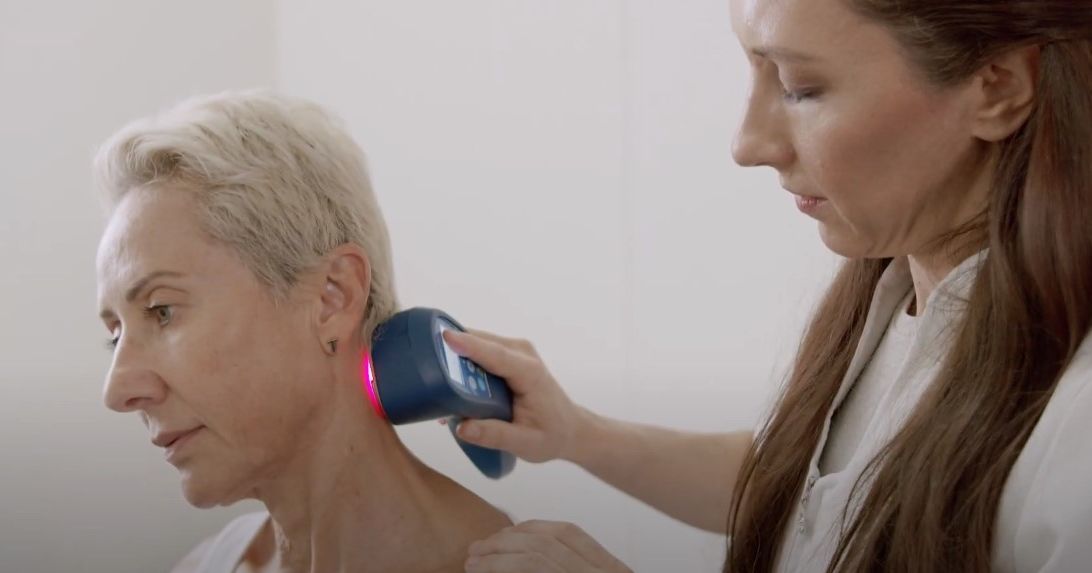
How Cold Laser Heals Sinus Infection
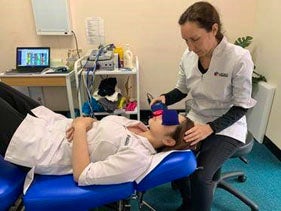 What is a Sinus Infection?
What is a Sinus Infection?
Sinus infection, also known as rhinosinusitis, is an inflammation of the nasal cavities. There are 2 pairs of sinuses that can be found in the head – the frontal and maxillary sinuses. Their main function is to produce mucus to provide moisture inside the nose and protect the nasal cavities from viral, bacterial and (in rare cases) fungal infections. When a sinus is blocked, it allows bacteria to grow and cause inflammation and swelling.
Who is at risk?
Anyone regardless of age or gender can experience sinusitis. However, there are a number of risk factors which increase the chance of experiencing a sinus infection, including those who:
- Suffer from asthma,
- Nasal polyps,
- Nasal allergies,
- Seasonal allergies,
- Weakened immune system,
- Previous history of smoking, or
- Have abnormal nose structures – ie. Deviated septum.
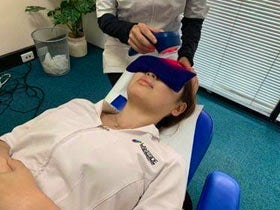 Do I have a Sinus Infection?
Do I have a Sinus Infection?
Some of the signs and symptoms of a chronic sinus infection may include a combination of nasal congestion, runny nose, facial pain and/or pressure, post-nasal drainage (PND), headache, loss of sense of taste and smell and a persistent cough.
Is it contagious?
Sinus infections caused by bacteria, allergies or fungal infections cannot be spread. However, the majority of sinus infections are caused by a virus, which is just as easily spread as the common cold. Therefore, it is important to practice thorough hand hygiene and coughing/sneezing into your elbow or a tissue.
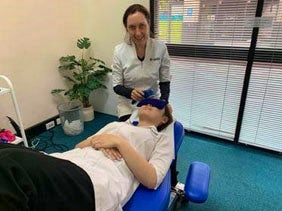 When to see a laser technician (how laser helps)
When to see a laser technician (how laser helps)
Sinus infections can be very uncomfortable, however there are several home remedies you can try to alleviate the pain and discomfort of sinus issues.
- Drink lots of water and run an air humidifier. This helps to thin the mucus in your nasal cavities and allows for drainage of your sinuses.
- Steam your face. Give yourself a steam treatment by holding your head above a large bowl of steaming hot water and placing a towel over your head so it falls to the sides of the bowl, trapping the heat. You can add eucalyptus or menthol oil to the water.
- Rotating warm and cold compresses on your sinuses may also help. Lay a warm compress draped across your face for 3 minutes, then replace it with a cold compress for 30 seconds. Do this 2-3 times and repeat 2-6x daily.
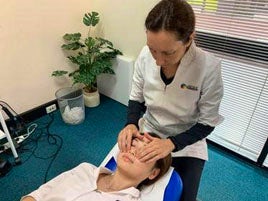 If you find that these home remedies are not working, then you may choose to see a laser technician. There have been multiple studies which have proven the effectiveness of low level laser therapy in the treatment of chronic rhinosinusitis.
If you find that these home remedies are not working, then you may choose to see a laser technician. There have been multiple studies which have proven the effectiveness of low level laser therapy in the treatment of chronic rhinosinusitis.
Low level Laser Therapy (LLLT) works to stimulate the cells of the body. Because they are low level of the lasers, they do not cause any heating (thermal) effects. Cold laser therapy or low-level laser works to produce:
- Increased growth factor response in cells by increasing the energy and protein synthesis which leads to improved cell duplication which helps to improve cell duplication
- Increased endorphin and serotonin release and suppress pain receptors (nociceptors) to help relieve pain
- Increased level of lymphocyte activity to aid in the strengthening of the immune system.
The Low level laser application is over the skin of the forehead and cheeks to target the frontal and maxillary sinuses respectively. One pilot study conducted by Soofia Naghdi et al. found that patients with chronic sinusitis treated with Low level laser 3 times a week for 10 sessions had a significant improvement of symptoms by week 4.
Sinus infection can be troublesome and painful, but with proper care from your laser technician, you can resume back to your normal daily lifestyle in no time. For treatment of your sinus infection, please do not hesitate to give us call on0468 429 111 or head to our website to book yourself in.
Reference
Naghdi S, Ansari NN, Fathali M, Bartley J, Varedi M, Honarpishe R. A pilot study into the effect of low-level laser therapy in patients with chronic rhinosinusitis. Physiother Theory Pract. 2013 Nov;29(8):596-603. doi: 10.3109/09593985.2013.775204. Epub 2013 Mar 22. PMID: 23521568.
Schedule an Appointment

